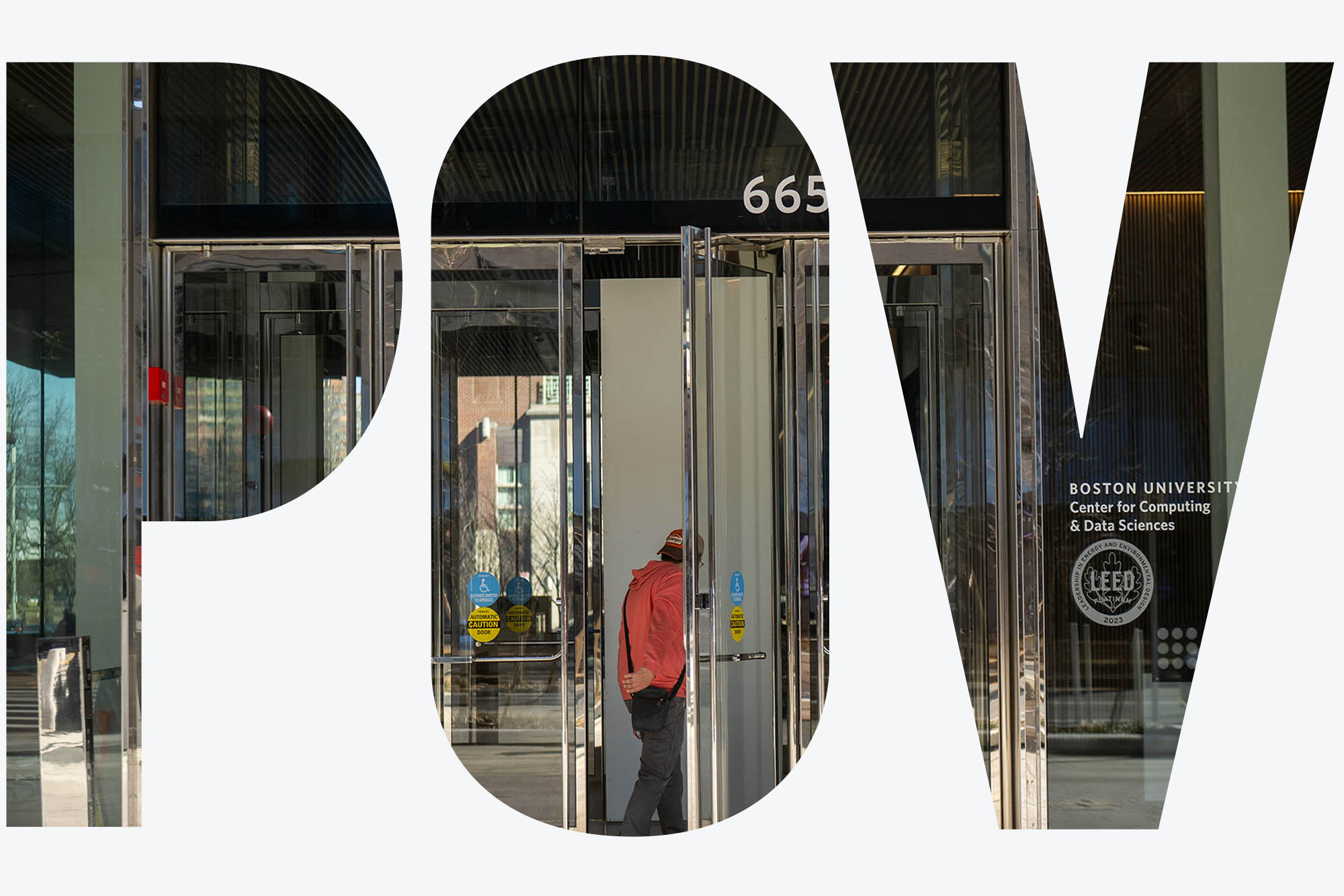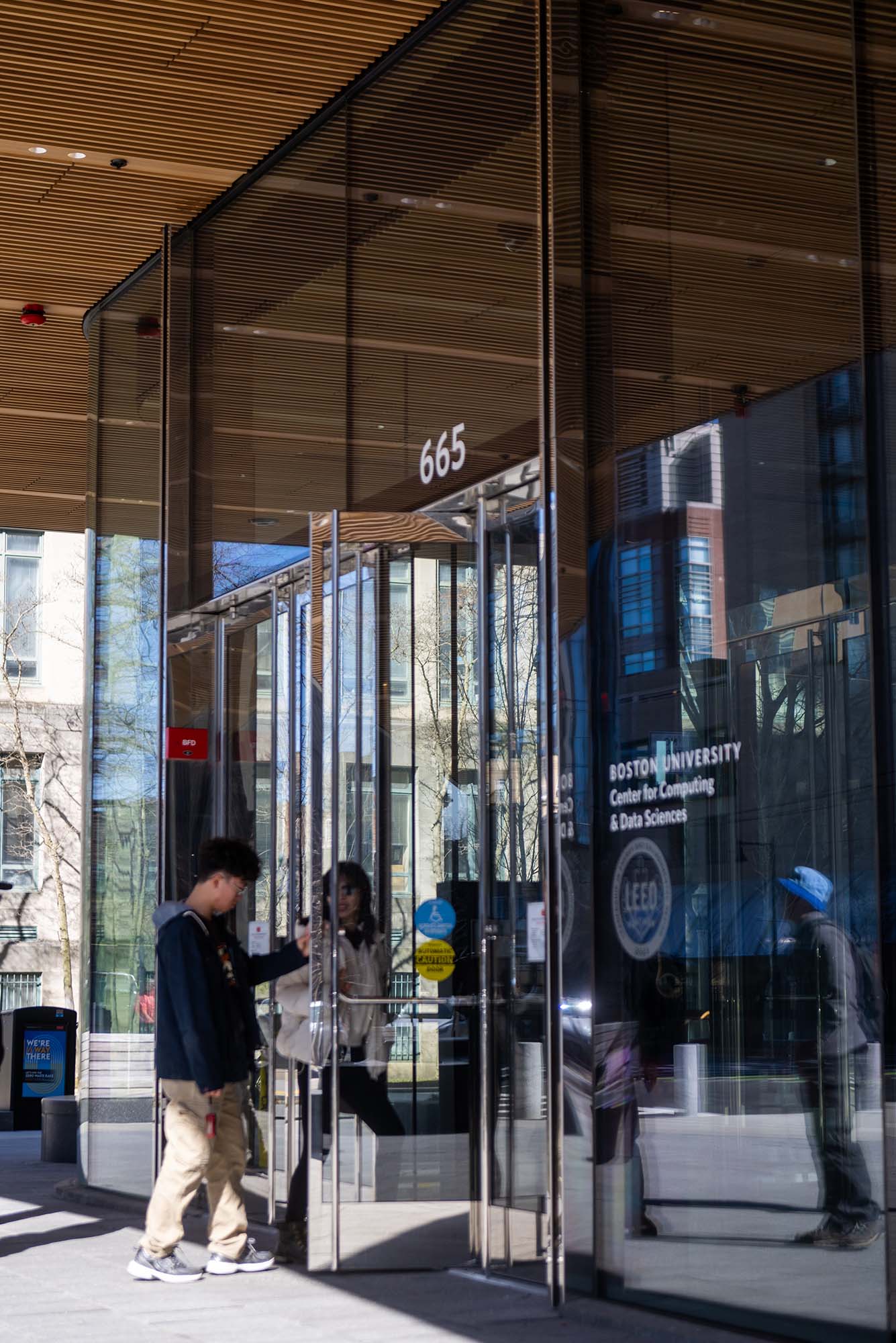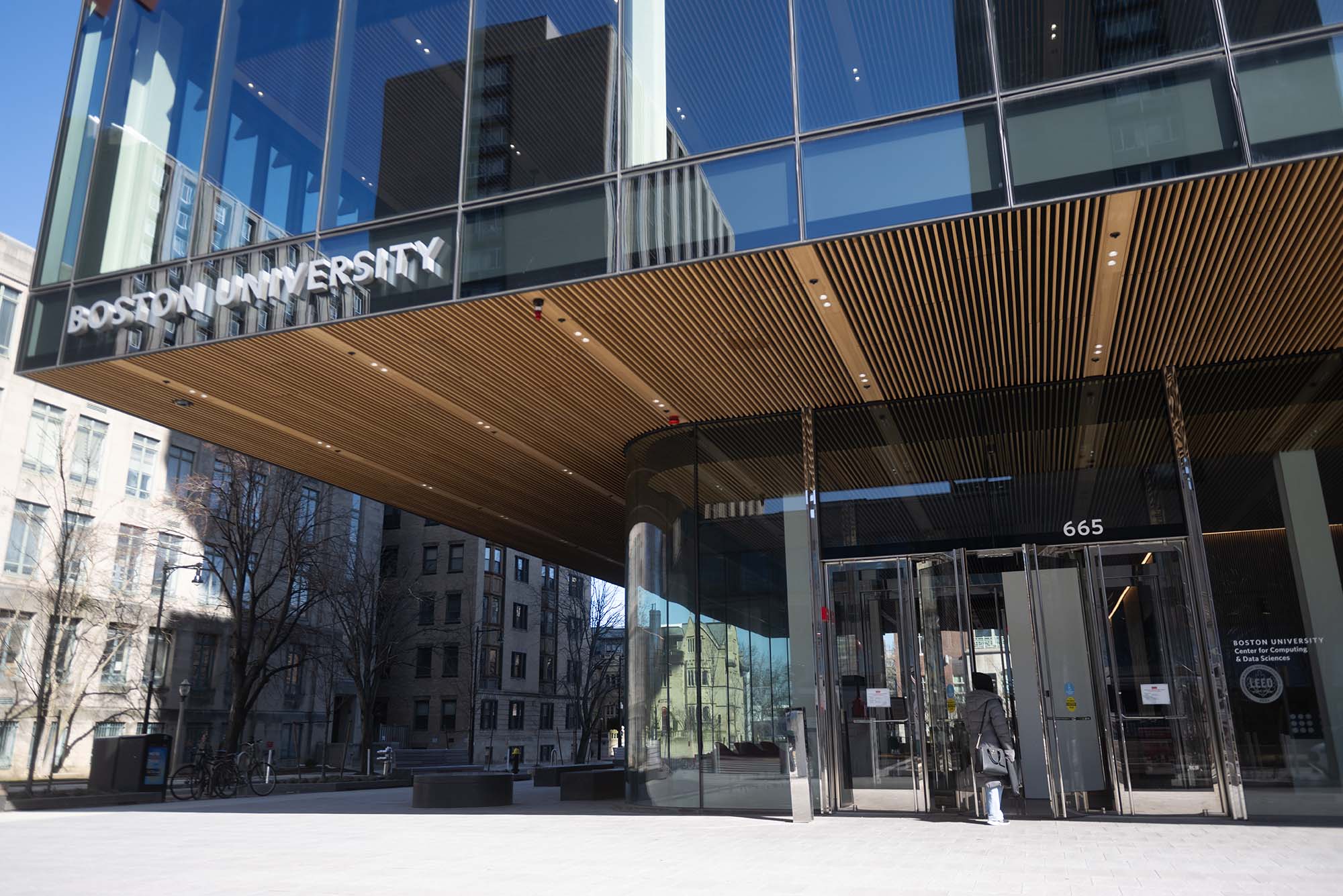POV: You’re Using the Wrong Door—and There’s a Reason

POV: You’re Using the Wrong Door—and There’s a Reason
Pay attention to how you enter and exit buildings. I think cell phones have changed the way we use doors.
Watch the doors next time you are walking around the Boston University campus. The double doors.
If you are like me when approaching a double door, you take the door to the right. It makes sense. By grasping the right handle of the right door with our right hands, we line up our bodies perfectly with the open space that is thereby created. And since people coming from the other direction take the door to their right—our left—there is an easy flow of traffic in and out of the building. This was the way I used doors all my life.
About seven years ago, I saw this start to change. I would see someone walking ahead of me reach for the left door and pull that one open. And they would do so with their right hand (which is very awkward, when you think about it). Soon enough, however, not only did I see more people reaching for the left door, I also saw them do so with their left hand (which makes sense).
The change mystified me, and so, curious as to its cause, I began a systematic observation, walking around campus, observing, taking mental notes, and doing some online research. In addition, my courses at BU, where I am a master lecturer at the College of Arts & Sciences Writing Program, include one called Anthropology Through Science Fiction, which inclines me to some “fantastic” thinking. Accordingly, as I walked around campus observing, I began writing a sci-fi short story about a professor on the BU campus who sees the same change and investigates it. I became the character in my own story. That poor (fictional) professor never figured out the cause, but I think I (in the real world) have. You may have even gathered the answer from my title: mobile phones.
I think it happened this way: most people carry their phones in their right hand, and many people do so as they walk, sometimes engaging with their phone, other times just carrying it. Either way, this means that their right hand is almost always occupied, which means that it makes good sense for them to use their left hand to open a door, which means that it makes even better sense to reach for and use the left door. Presto! Simple adaptation. Maybe not as profound an adaptation as tool use contributing to increased bipedalism or even improved intelligence. But it’s in the same ballpark.
So, this appears to solve the mystery, except for one problem—the shift does not appear to be uniform. If it were, then there would be a mirror effect, and people would be shifting to the left door in both directions. That is not what I see happening. Instead, I see people now tending to use the same door when they enter and leave a building—the left door to some, the right door to others, but the same door for both. The end result is that people end up squeezing through one door, while leaving the adjacent door unused. Why is this?


I don’t have a good answer. Is it that people leaving a building are less likely to be looking at their phones, so with their right hand free they default to the right door? And is it that those coming in from the street are more likely using their phones, and so, with their right hand in use, they default to the left? Or it’s more simple: people are inherently practical and would prefer to use a door already swinging open rather than be the person to push open a closed door. I do remember people sometimes trying to squeeze through one door, before I saw the shift to the left door, so this behavior is not new.
In my online research, I found a 1998 article titled “Door Etiquette,” published in a Cambridge newspaper called The Tech. The author, Eric J. Plosky, was bemoaning the effects of “a sorry segment of the population that doesn’t understand proper door etiquette,” an etiquette which he synthesized into two basic rules: 1) Those entering a building yield to those exiting. 2) Do not use the door to your left, even if it is open. He wrote that the decline of door etiquette was particularly noticeable in Boston, which he speculated might be part of a wider pattern of movement in Boston, which he described as “a frightening place where both streets and drivers wander drunkenly and direction is often meaningless.”
Mobile phones were in their infancy when this article was written. Thus, they could not be the cause for the lack of door etiquette back in the late 1990s. Does this suggest a prior cause which the use of mobile phones has merely intensified? Plosky said nothing about a shift to the left door in his 1998 article, and the cause seemed instead to be the practical solution of using the door already open. Only back then it was not the left door, but the right door. If you follow me.
I have brought up my theory in my Anthropology Through Science Fiction courses, where we often talk about the influence of technology on human behavior. I draw a set of doors on the blackboard and ask the students which door they would take, the right or the left. Almost universally, they say they would take the right. When I point out the change taking place, many acknowledge noticing it, but are mystified as to the cause. Only once did a student come to the conclusion that I have: mobile phones. I have also asked family, friends, and colleagues, and all agreed that the right door is the right door to take. And most noticed the change taking place, but had not thought much about it. So, we seem to have a case in which the necessity of everyday practice is pulling us towards a new norm, all while we are only distractedly aware that it is happening.
I mentioned that I was writing a short story about a professor who was watching the doors as I am watching the doors. That professor is a writing instructor who imagined that the cause of the shift was an alien plot designed to change the way we used doors—for nefarious reasons he can only guess at. The story harked back to paranoid science fiction of the 1950s. And the last line in that story, like the main title of this essay, was “Watch the doors,” a nod to the final words of the 1951 film The Thing from Another World: “Watch the skies.”
I liked my story, but the sentiment was not shared (even the Society of Misfit Stories rejected it). Maybe I will try again. In the meantime, I want to get the “secret” out with this little essay.
I can’t be 100 percent sure if my belief about what’s causing imperfect door etiquette—mobile phones—is correct. Maybe it needs more study or the application of some theory. But if it is the mobile phone, then we can add one more item to the growing list of ways that mobile phones in particular, and technology in general, influence our actions (including walking behavior and social etiquette).
What I am sure of is that the change is happening. I’ve seen it. If you don’t believe me, the next time you are walking about campus, just stop and do this: Watch the doors!
James Pasto is a master lecturer in the College of Arts & Sciences Writing Program. He can be reached at jpasto@bu.edu.
“POV” is an opinion page that provides timely commentaries from students, faculty, and staff on a variety of issues: on-campus, local, state, national, or international. Anyone interested in submitting a piece, which should be about 700 words long, should contact John O’Rourke at orourkej@bu.edu. BU Today reserves the right to reject or edit submissions. The views expressed are solely those of the author and are not intended to represent the views of Boston University.
Comments & Discussion
Boston University moderates comments to facilitate an informed, substantive, civil conversation. Abusive, profane, self-promotional, misleading, incoherent or off-topic comments will be rejected. Moderators are staffed during regular business hours (EST) and can only accept comments written in English. Statistics or facts must include a citation or a link to the citation.